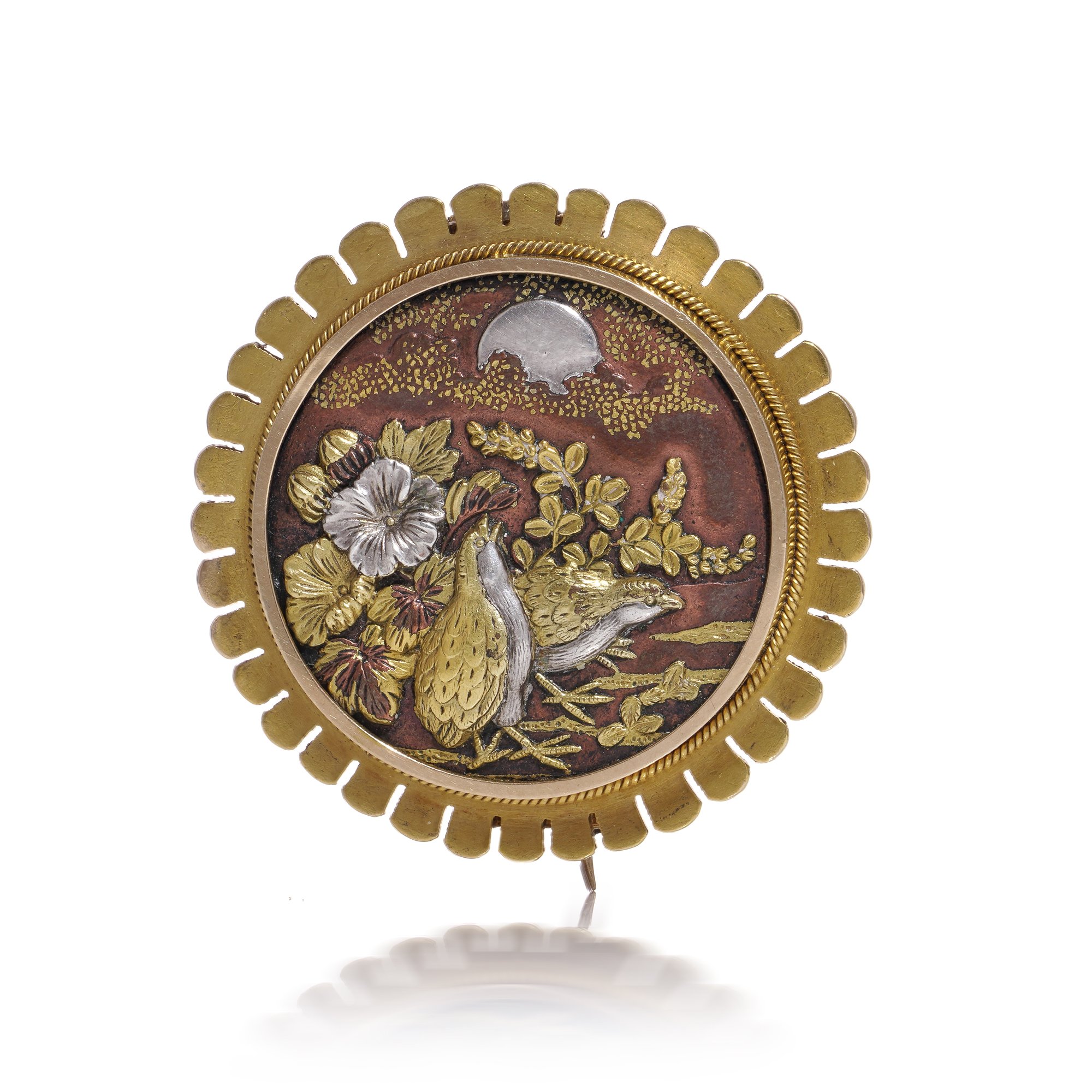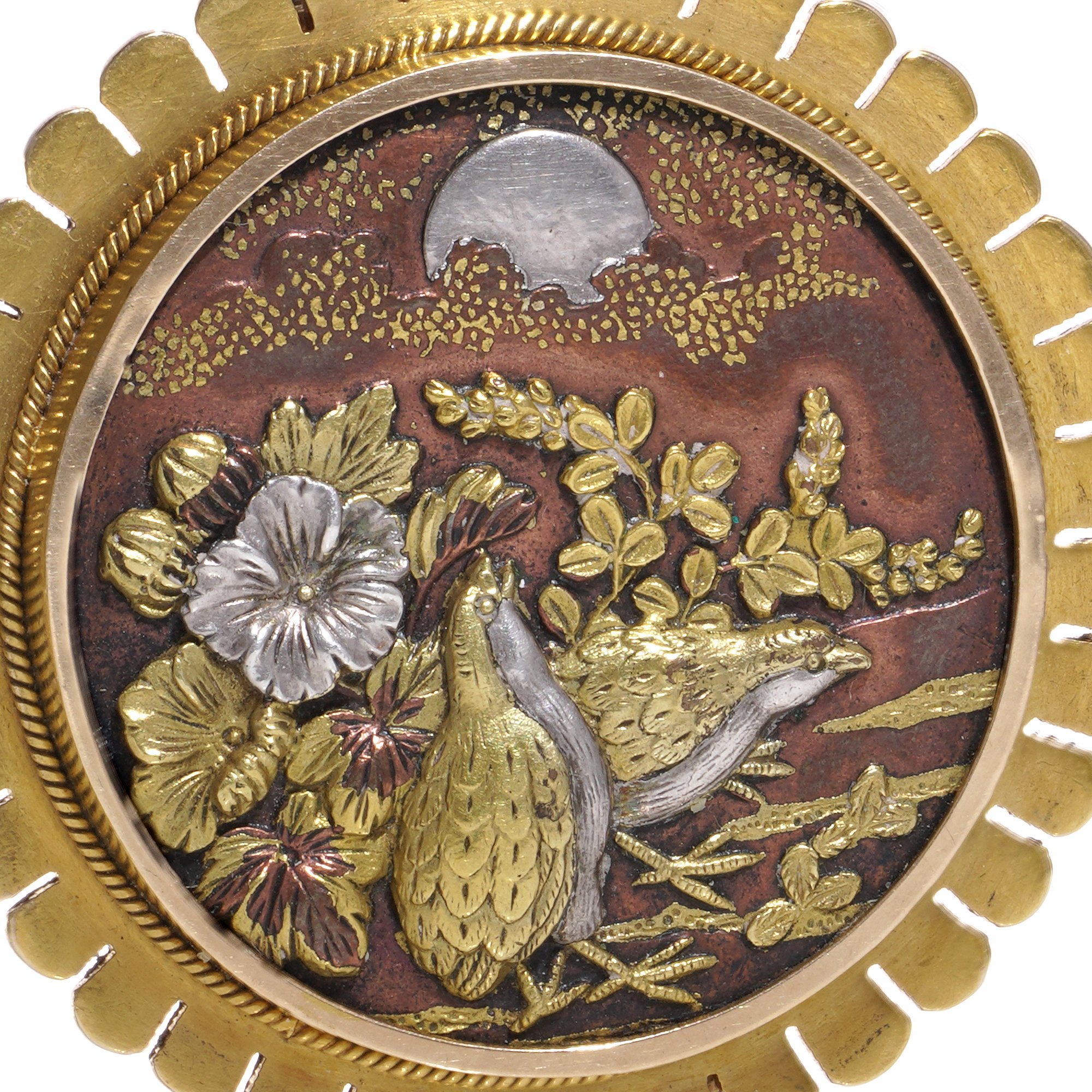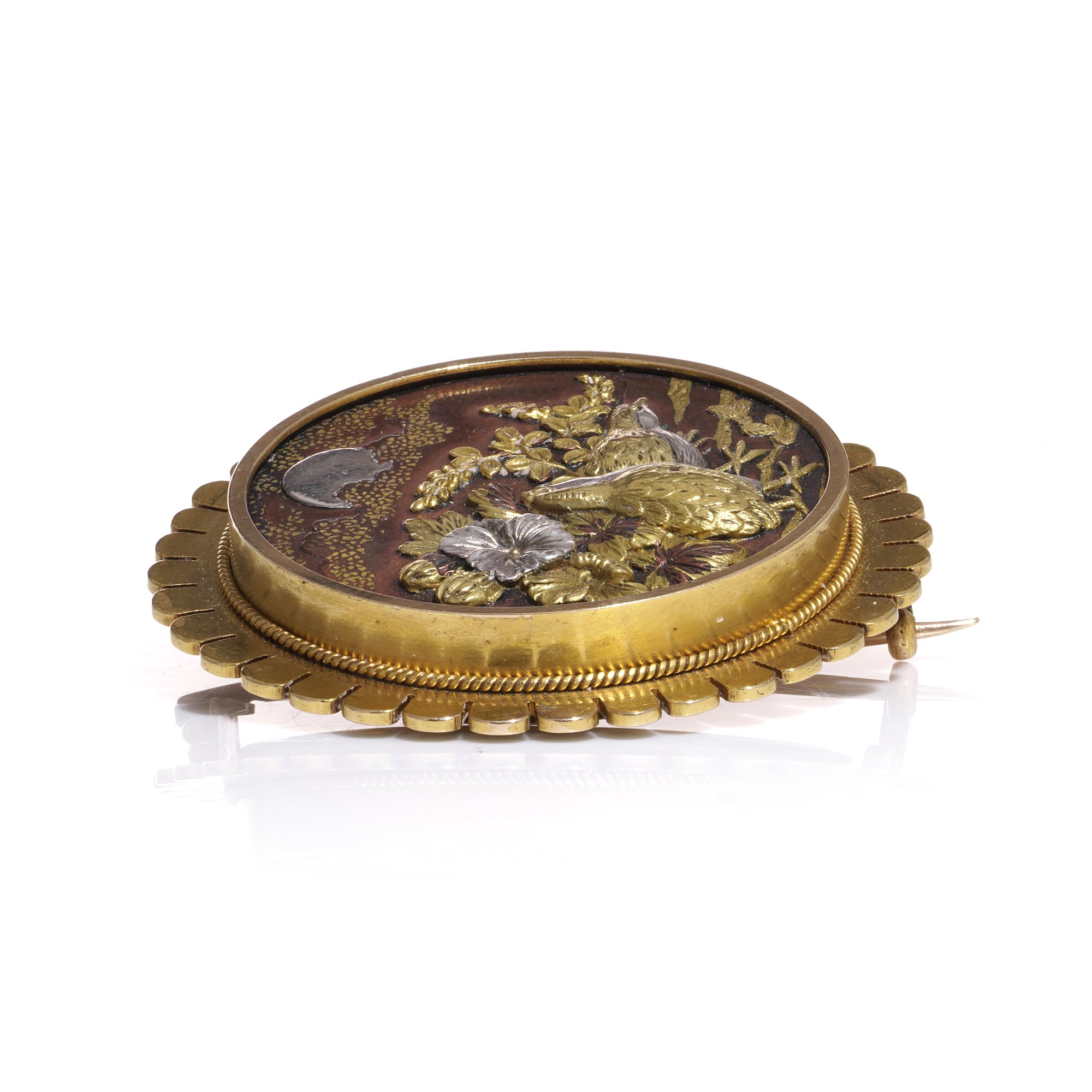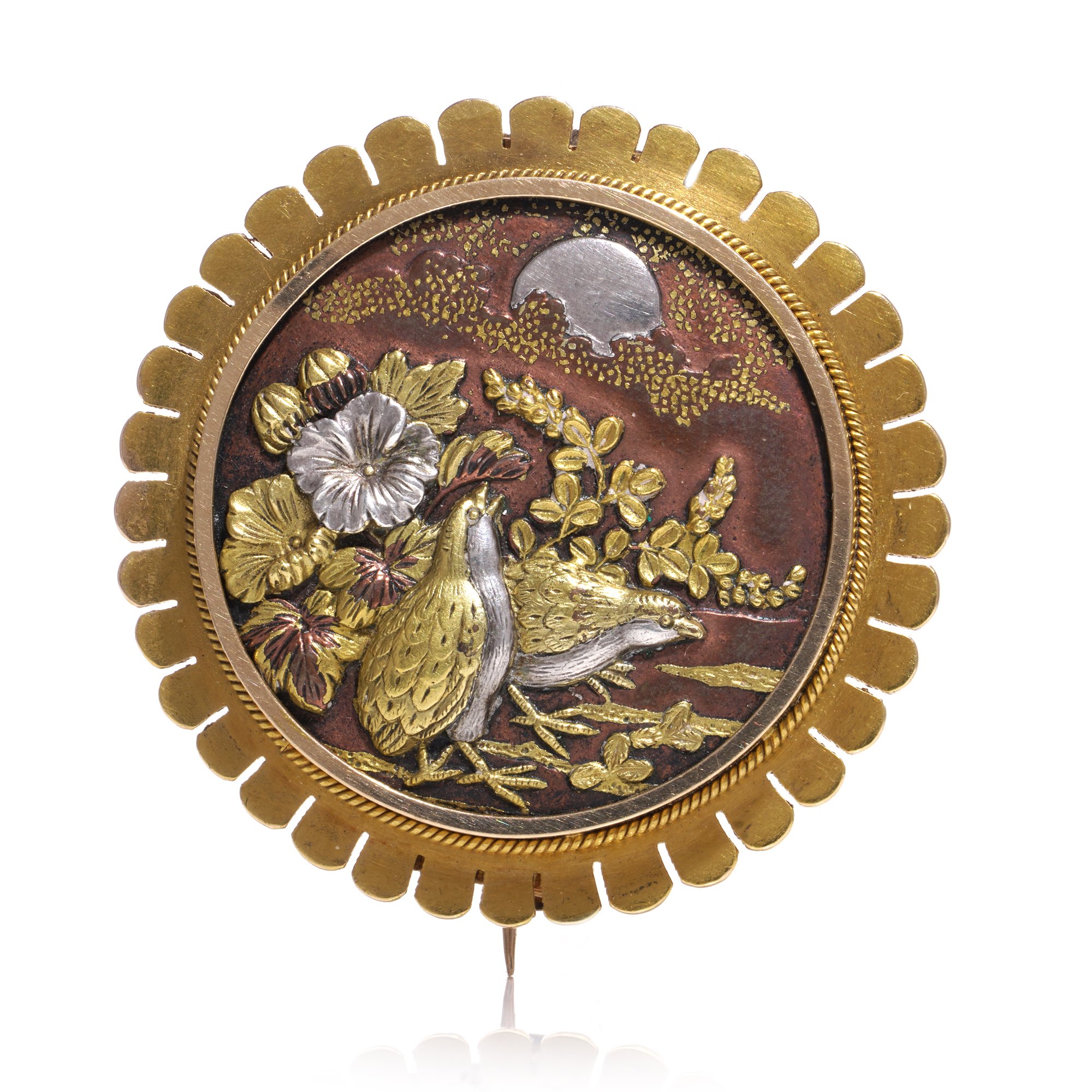Japanese Shakudo 18kt gold Brooch with Quail Motif - Meiji Period ( 1868–1912 )
The brooch is a fine example of Japanese mixed metalwork, likely from the Meiji period (1868-1912). This era is known for its exceptional craftsmanship and intricate designs, often incorporating natural motifs and traditional Japanese themes.
The brooch is a fine example of Japanese mixed metalwork, likely from the Meiji period (1868-1912). This era is known for its exceptional craftsmanship and intricate designs, often incorporating natural motifs and traditional Japanese themes.
The brooch is a fine example of Japanese mixed metalwork, likely from the Meiji period (1868-1912). This era is known for its exceptional craftsmanship and intricate designs, often incorporating natural motifs and traditional Japanese themes.
-
The brooch showcases several distinctive design elements:
Material and Technique: The brooch is made using a combination of metals, including gold and silver, a technique known as "shakudo" or "shibuichi." These alloys were commonly used in Japanese metalwork to create contrasting colours and intricate details. The craftsmanship involves inlaying different metals to achieve a detailed and layered effect.
Design Motif: The central design features a nature scene with quails, amid flowers and foliage. This is a common motif in Japanese art, symbolizing peace, tranquillity, and the beauty of nature. The moon in the background adds a serene and poetic element to the scene, emphasizing the traditional Japanese appreciation for natural beauty and harmony.
Frame: The outer frame of the brooch has a scalloped edge, which adds a decorative and elegant touch, enhancing the overall aesthetic appeal of the piece.
Important aspects of this brooch include its historical context, representing the artistic and cultural achievements of the Meiji period. During this time, Japan was opening up to the world, and Japanese art and craftsmanship were gaining international acclaim. The intricate workmanship and the use of mixed metals reflect the high level of skill and artistry characteristic of this period.
-
Dimensions:
Diameter: 4 cm
Depth: 1.2 cm
Weight: 25 gramsCondition: Pre-owned with minor signs of usage and age, excellent condition overall.
-
Shakudo technique history:
Shakudo a traditional Japanese alloy celebrated for its distinctive purple-black coloration, holds a significant place in the realm of Japanese metal arts. Originating in Japan during the medieval periods of Nara and Heian (708-1184 AD), Shakudo evolved through meticulous craftsmanship and careful chemical treatments. The alloy typically consists of copper with a small percentage of gold, often less than 5%, which contributes to its unique colour when oxidized. This process involves boiling the alloy in specific solutions, resulting in a surface coated with a thin film of cuprite (Cu2O) that imparts the desired dark hue.
Historically, Shakudo found widespread use in decorating sword accessories, such as Tsuba (sword guards), as well as in ornamental metalwork for sliding door catches and other artefacts. Its popularity peaked during the Edo and Meiji periods (17th to early 20th century), where it was highly prized for its aesthetic appeal and ability to harmonize with other metals like gold, silver, and Shibuichi. The production techniques for Shakudo were closely guarded secrets passed down within specific artisan families until the middle of the Edo period when broader dissemination of metalworking knowledge began.
In contemporary Japan, while Shakudo's use has diminished compared to its historical prominence, it remains an integral part of traditional metal arts and local craftsmanship. The alloy's durability, combined with its striking coloration and historical significance, continues to captivate artisans and collectors alike. Ongoing research into its production techniques and the chemical processes underlying its colour formation underscores its enduring cultural and artistic value in both historical and modern contexts.
-
ITEM LOCATION : United Kingdom
SHIPPING FEE: Complimentary Express & Insured Shipping
INCLUDED: Complimentary Gift Wrap Packaging & Certificate of Evaluation.
RETURNS: 14-Days Return Policy, Money-Back Guarantee.







